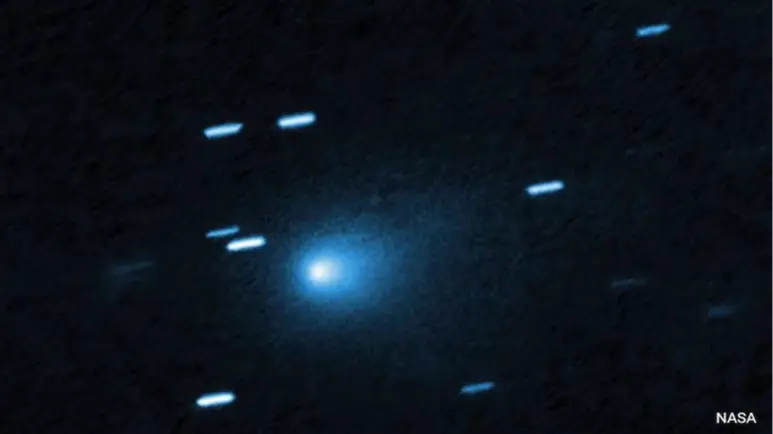Comet Borisov misidentified as 3I/Atlas during close approach to Earth — scientists clear up the confusion
-
 Comet Borisov misidentified as 3I/Atlas during close approach to Earth (Image via NASA)
Comet Borisov misidentified as 3I/Atlas during close approach to Earth (Image via NASA)Scientists have confirmed that the comet that appeared near Earth on November 11 was Comet Borisov, not 3I/Atlas, as some earlier reports had claimed. It began when sky enthusiasts saw an intensely bright object streaking across the sky.
Since 3I/Atlas has been in the news for several weeks, many people naturally assumed that it was the same interstellar comet appearing again. However, after cross-checking data from various observatories, scientists identified the object as Comet Borisov.
How the mix-up happened
Both 3I/Atlas and Borisov are interstellar objects, meaning they came from outside our Solar System. They look quite similar, each with a glowing cloud of gas and dust. Its speed and brightness when astronomers first observed it meant that it wasn't immediately identifiable.
Incomplete early reports spread rapidly on social media, which created confusion. However, further observations revealed that the path of this comet matched Borisov, not 3I/Atlas.
About Comet Borisov
In 2019, amateur astronomer Gennady Borisov first discovered Comet 2I/Borisov in Crimea. The comet became the second interstellar object ever found after 'Oumuamua in 2017.
Borisov, like regular comets, is composed of ice, dust and rock, but it originates from a completely different star system.
Scientists say that studying it helps them understand how other planetary systems form. Borisov, during its November 11 flyby, was millions of kilometres away from Earth and it did not pose a threat to the Earth.
To large telescopes, it appeared as a small glowing dot with a tiny tail attached to it. Borisov and 3I/Atlas are two different comets. Although both are interstellar visitors, Borisov and 3I/Atlas are on different trajectories through space.
3I/Atlas has drawn attention for its unusual changes, including changes in colour and brightness. In the days following perihelion, some early images revealed it without a visible tail; Borisov has been much more stable since its discovery.
The confusion between the two likely came from their similar appearance and timing.
What scientists are doing now
Astronomers are continuing to study Borisov’s movement and brightness to gather more data. Each time a comet from outside the Solar System passes through, it gives scientists a chance to learn more about how these distant objects behave.
They also plan to keep monitoring 3I/Atlas separately to understand its recent changes after it passed close to the Sun.
A rare event
Comets like Borisov are extremely rare, and spotting one passing close to Earth gives researchers a valuable opportunity to study material from beyond our Solar System.
While this event initially caused some confusion, it reminded everyone of the vast amount still to be learned about the space beyond our planet and how quickly science can distinguish facts from speculation.
TOPICS: 3I/ATLAS, 3I/ATLAS comet
- Scientists say 3i/Atlas could be a ‘one in a million’ natural object as its speed and colour shift shock observers
- The mysterious anti-tail of 3I/Atlas baffles astronomers — new study reveals complex jet-like structures
- 3I/ATLAS surprises scientists with a huge jet aimed at the Sun—what does it really mean?
- What happened to 3I/Atlas? Interstellar comet reappears without a tail after passing behind the Sun